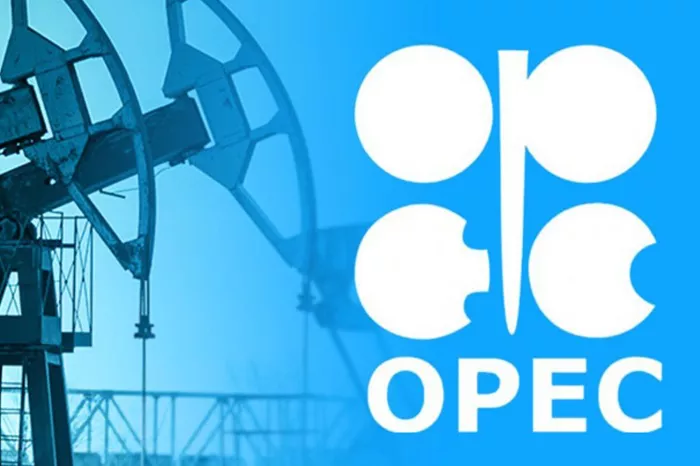In response to a backdrop of subdued demand growth, burgeoning U.S. production, and elevated interest rates, the OPEC+ alliance has taken the decision to prolong the majority of its oil output reductions until 2025. Presently, the coalition is curbing output by a combined 5.86 million barrels per day (bpd), representing approximately 5.7% of global demand. This encompasses the continuation of the 3.66 million bpd cuts previously scheduled to conclude by the end of 2024, alongside voluntary reductions by eight member nations amounting to 2.2 million bpd, set to expire at the end of June 2024.
The announcement of this extension prompted a downturn in oil prices, with front-month Brent crude slipping to a four-month low below $77 per barrel (bbl). This marked a substantial decline of $8/bbl from the previous week’s peak and more than $15/bbl lower than April’s year-to-date high.
Insights from commodity analysts at Standard Chartered suggest that the downward pressure on prices stems from a confluence of factors. These include prevailing macroeconomic pessimism, speculative short positions, and the prevalence of algorithmic trading that tends to overshadow more fundamentally-driven market sentiments. Data sourced from Bridgeton Research Group via Bloomberg reveals a shift in oil futures markets towards a net short position in Brent, contrasting with a net long position observed at the close of the preceding week.
StanChart analysts argue that the recent downturn in oil prices is primarily attributed to market expectations surrounding a substantial resurgence of OPEC+ oil supply in 2024. However, they contend that such an explanation lacks substantiation. According to their assessment, any increase in oil production during the fourth quarter relative to the second quarter is projected to be relatively modest at 360 kb/d. They maintain that OPEC+ possesses the capacity to boost production by 1 million b/d without unsettling market equilibrium. Additionally, they emphasize that any production adjustments will be contingent upon prevailing global market conditions, with the broader financial landscape anticipating potential deviations from current forward guidance by the Federal Open Market Committee (FOMC) in response to evolving data and events.
Furthermore, StanChart highlights several bullish factors overlooked by the markets:
1.Extension of voluntary cuts totaling 1.65 mb/d until the end of 2025.
2.Reaffirmation of the required production level for all OPEC+ countries through 2025.
3.Resolution of longstanding discussions with the UAE, resulting in a 300 kb/d increase in the UAE’s required production level, phased in over nine months commencing January 2025.
4.Commitment from Russia, Iraq, and Kazakhstan to devise a compensation schedule for overproduction in the first half of the year by the end of June.
5.Postponement of discussions regarding production targets in light of third-party consultant assessments of capacity until late 2025, potentially serving as a basis for deliberations on 2026 required production.
6.Empowerment of the Joint Ministerial Monitoring Committee (JMMC) to convene an OPEC+ ministerial meeting at its discretion or conduct additional meetings as deemed necessary.
Overall, analysts anticipate that decisions made by OPEC+ will ultimately bolster oil prices. Moreover, the increased transparency provided by the OPEC+ report is expected to mitigate the likelihood of bearish tail-risk events materializing.
Meanwhile, in the European gas market, dominant dynamics remain unchanged, characterized by sluggish inventory builds and heightened sensitivity to supply disruptions. Data from Gas Infrastructure Europe (GIE) indicates that EU gas inventories as of June 2 stood at 81.75 billion cubic meters (bcm), reflecting a year-on-year increase of 1.1 bcm and a surplus of 14.9 bcm above the five-year average. Despite a weekly inventory build of 1.9 bcm, notably lower than historical averages, the surplus above the five-year average has diminished on 45 out of the past 48 days.
Challenges persist on the natural gas supply side, with recent supply disruptions, such as a fault in Norway’s Sleipner gas field, triggering price rallies. Although the outage is anticipated to be brief, with repairs projected to conclude by the upcoming weekend, prices are expected to remain buoyed by slower-than-average inventory builds. Dutch Title Transfer Facility (TTF) gas for January 2025 delivery surged to EUR 43.30 per megawatt hour (MWh) on June 3, while the front-month contract reached a five-month high of EUR 38.70/MWh before settling at EUR 36.014/MWh.
Related topics:
OPEC, Other Oil Companies Under Antitrust Scrutiny By Us House Lawmakers
OPEC Oil Production Rises In May: Nigeria And Iraq Lead The Way

